In traditional Kyrgyz culture, women have been long regarded as the keepers of culture, the managers of the household, and nurturers of children. Despite this vaunted position, Kyrgyzstan remains, overall, a patriarchal society and women are also often expected to be quiet and submissive.
Below are several Kyrygz women who have broken that mold. They are known for their gentleness and wisdom, but also for their fearlessness and strong-willed characters. They have left an indelible mark on their nation’s history and culture, and are remembered as heroes and role models for all Krygyz to respect and emulate. Kyrgyz history, in fact, knows many such women.
From the realms of politics to the arts, Kyrgyz women have been at the forefront of transformative change and cultural preservation. They have navigated the complex terrains of societal norms and political upheaval to advocate for democracy, peace, beauty, and justice.
17 Great Women of Kyrgyzstan
The following list originally appeared in the Russian-language, Kyrgyzstan-based publication Limon.ru under the name “18 Great Women of Kyrgyzstan That It’s Shameful Not To Know” (and, despite the name, only 17 are actually featured). The entries have been translated by SRAS Intern Lindsey Greytak and are presented here as an interesting selection of Kyrgyz women picked by a Krygyz source as a source of Kyrgyz pride. Note that the list is dominated by historical names from the Soviet era, which ushered in a time when women’s rights and especially women’s employment were championed by the state. Note as well that the short biographies generally emphasize the women’s ability to have a fulfilling and respected career outside the home and often a fulfilling marriage and family life inside it as well.
Kurmanjan Datka (1811-1907)
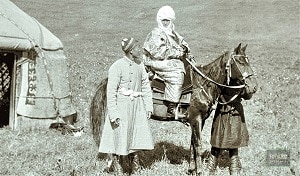
This Alai region queen was twice awarded the honor of the title “Datka,” which is roughly equivalent to “General.” Even in her youth she displayed a strong and adamant character. When it was time for her to marry, she did not like her husband, and so she went against the old traditions and returned to her family’s yurt. Instead, she soon became the wife of the feudal lord Alymbeka-Datka, who was her soulmate. As the wife of the ruler of the Alai Kyrgyz people, the young woman not only birthed five children, but also helped manage the administration and serve her people in every way possible. The Mongol Khan Muzaffar of Bukhara recognized her influence, and later so would the ruler Khudoyar Khan of Kokand. The Russian General Skobelev also called her “Datka” and gained great respect for her.
Editor’s Note: The biography of Kurmanjan Datka was made into a film in 2014 by Aitysh Film. You can read a synopsis of it and several reviews done by SRAS students studying Central Asian Studies in Bishkek, Kyrgyzstan. The film itself may be viewed, legally, in its entirety, on YouTube with English subtitles.
Toktogon Altybasarova (1924-2015)
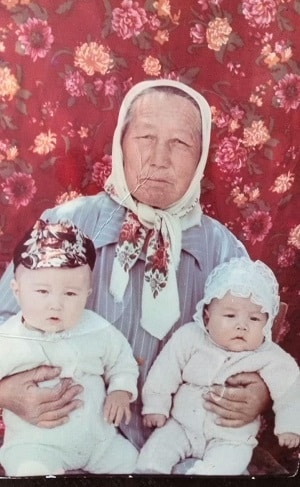
This farmer took 150 children into her own care after they were evacuated during the Leningrad Blockade in World War II. At the age of 16, she was appointed chairman of the village council in her town of Kurmenty. After August 27, 1942 when she took in the evacuated children from Leningrad, the children lived in a dormitory on a local collective farm, and were under her care for the next ten years. Toktogon herself gave birth to and raised eight children together with her husband, who was a front-line soldier. She lived and worked all her life in her native village of Kurmenty. Her likeness was used to create a monument to the blockade and to the Kyrgyz people who helped shelter evacuees from Leningrad sent to Kyrgyzstan. The monument stands today in Victory Park in Moscow.
Aisuluu Tokombaeva (1947)

A Soviet ballerina, choreographer, and laureate of the USSR State Prize, she participated in the productions of Swan Lake by P. Tchaikovsky, and Spartak by A. Khachaturian, etc. In 1973 she became a member of the Communist Party of the Soviet Union. Since 1995 she has been working as a teacher in Turkey, teaching choreography at the Conservatory of Hacettepe University. In 2017, this outstanding ballet artist turned 70 years old. As a talented ballerina she proudly represented Kyrgyzstan through her art in many cities of the Soviet Union and abroad (Poland, Bulgaria, Finland, Libya, Tunis, Sweden, etc.)
Tattybubu Tursunbaeva (1944-1981)

This actress was born on July 12, 1944 to a peasant family in the village of Chaek in the Jumgalsky Region of Kyrgyzstan. In her first major role, she played Ak-meer in the television movie of the same name directed by Melis Ubukeev. She demanded that Tursunbaeva fully submerge herself in the character, a punishing emotional feat.. Thanks to Tattybubu’s part in the film Ak-meer, it became a phenomenon in national cinema. In 1971 the director Tolomush Okeev invited her to play the role of Urkuya. The film was based on actual events. (Urkuya was an early socialist organizer in Southern Kyrgyzstan who was murdered by “rich peasants.”) All leading roles in the Kyrgyz State Academic Theater’s repertoire belonged to Tattybubu. These include both global and Soviet classics, and modern Soviet and Kyrgyz dramas. She acted in productions by Shakespeare, Lope de Vega, G. Lorca, C. Aitmatov, M. Karim, E. Schwartz, Malikov, Baydzhiev, Abdumomunov, Makaenok, and others.
Bubusara Beyshenalieva (1926-1973)

Kyrgyzstan’s first ballerina and National Artist of the USSR (an honorary title given to the artists of the Soviet Union) was born on May 17, 1926 in the village of Vorontsovka. At ten years old, she left with a group of other children from Kyrgyzstan to attend the Leningrad Choreographic School. The (legendary Russian) ballerina A. Vaganova became Bubusara’s idol and also her instructor. In 1941, Bubusara became a soloist at the Maldybaeva Kyrgyz Opera and Ballet Theater. An outstanding ballerina, she performed all over the Soviet Union and abroad. In 1949 she began teaching at was then the M. Kurenkeev Music and Choreography School. It is now the Bazabaeva Choreography School. Zhanysh Kulmambetov wrote the play Chingiz and Bubusara, inspired by the love story of between Bubusara and famed Kyrgyz author Chingiz Aimatov. A film was also made based on this love story, which received unflattering reviews from Kyrgyz film critics.
Olga Manuylova (1893-1984)
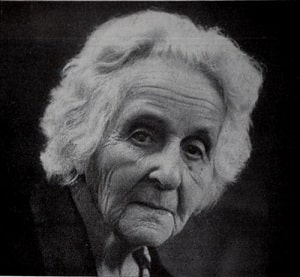
A National Artist of the Kyrgyz Soviet Republic, Olga was born in 1893 to the family of a military doctor in Nizhny Novgorod, Russia. In 1913, she entered the Moscow School of Painting, Sculpture, and Architecture. In 1939 she began her work as a master of monumental and decorative sculpting. At the Kyrgyz Theater, Opera, and Ballet are concrete statues made by her in 1955. In 1963, Olga also made a monument to (Kyrgyz poet, Manaschi and folk song writer) Togoloku Moldo out of high quality granite. Kyrgyzstan became the second home and great love of the sculptor and muralist. It was in Kyrgyzstan where she spent her best and most creative years.
Zuurakan Kainazarova (1902-1982)

This rural farmer and exemplary mother was born on June 18, 1902 to a poor family in the Zylamish Valley in the Sokukul Region of the Chui Oblast. She began working as a laborer in 1929 on an agricultural artel (a type of cooperative association that existed particularly between 1861 and the 1950s). By 1934, she was already the head of a collective beet farm and achieved record high yields of sugar beets. At one time, she cultivated 971 centners (also known as quintals, a historical unit of mass) per one hectare. It was an all time record; at that time, the average in the Kyrgyz Republic was 400 centners per hectare. During World War II, this incredibly hard working woman was able to help other laborers of Kyrgyzstan to provide food to soldiers on the front-line. In addition to her hard work, Kainazarova sheltered a large number of orphan children of different nationalities.
Urkuya Salieva (1910-1934)

A political figure and freedom fighter, Urkuya was born to a peasant family in the town of Merka-Murkut in the Nookat district. Strong in character, she fought for the rights of women, defended the interests of the poor, and actively called for unity and labor. In 1928, in defiance of customs and traditions, she was elected chairman of the village council of Merka-Murkut. A year later, the nineteen-year-old Urkuya organized the collective farm Kyzyl-Asker. Due to her active participation in society, Salieva became a member of the Central Executive Committee of the Kyrgyz Autonomous Republic. At the age of 24 she tragically died together with her husband at the hands of an enemy of the Soviet state. On the initiative of the laborers, the collective farm named Salieva in her memory.
Kuluypa Konduchalova (1920-2013)

A Soviet state figure, Minister of Foreign Affairs (for the Kyrgyz SSR), and Minister of Culture (for the Kyrgyz SSR) was born on July 15, 1920 in the town of Kara-Zhygach in the Alamudun Region of Kyrgyzstan. In 1938, she graduated from the Frunze Pedagogical College (located in present day Bishkek). After graduation, she began her work as a teacher in the village of Kulanak. At first she worked as a primary school teacher, but later she became the head teacher of a seven-year-school, and later became the director. In January of 1940 she joined the Communist Party of the USSR. From 1958-1980 she served as the Minister of Culture of the Kyrgyz Soviet Republic. Konduchalova gave many artists the chance to express themselves. Under her leadership the art of Kyrgyzstan became more popular.
Sabira Kumushalieva (1917-2007)
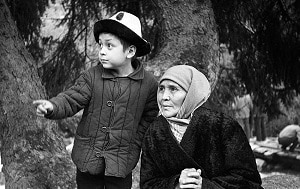
A National Artist of the Kyrgyz Soviet Republic, Sabira was born March 19, 1917, in the village of Tokoldosh. She graduated from Frunze Pedagogical College and began work as a teacher at an elementary school. In 1934 she became an actress at the Kyrgyz Drama Theater. The actress was one of the founders of theatrical art in Kyrgyzstan. In 1966, she began to act in films. She played more than 100 roles. Together with her spouse Muratbek Ryskylov, also a National Artist of the USSR, they raised four children.
Saira Kiyizbaeva (1917-1988)

This opera singer was born on October 24, 1917 in the village of Tokoldosh. In 1931, she began her studies at Frunze Women’s Pedagogical College. In 1933, she began working as an instructor in the Komsomol District Committee. In 1936, she began studying in the studio of the Kyrgyz Music and Drama Theater. In 1940, she gained experience at the National Studio at the Moscow Conservatory, and between 1947-1949 she improved her skills there. In 1952 she was an intern at the Bolshoi Theater and in 1947 she participated in the film Soviet Kyrgyzstan. Between 1963-1965 she was the director of the Kyrgyz Opera and Ballet Theater. In 1959 she directed the opera “Madame Butterfly.”
Darkul Kuyukova (1919-1997)

This actress of both stage and screen was born May 15, 1919. She began her stage career in 1936 at the Youth Theater. In 1940 she became an actress at the Kyrgyz Academic Theater of Drama (the present day Abdymomunov Kyrgyz National Drama Academy), and a few years later became a member of the Communist Party of the Soviet Union. Her first film debut was in 1954. She was also a member of the Union of Cinematographers of the Kyrgyz Soviet Republic. She stared in films such as Jamilia, White Ship, and Valley of the Ancestors, etc. She has also participated in a variety of theatrical productions such as The Inspector by N. Gogol, The Storm by A. Ostrovsky, and Twelfth Night, by William Shakespeare.
Baken Kydykeeva (1923-1993)

This actress of both film and theater was born October 20, 1923 in the village of Tokoldosh. She started performing on stage in 1936 at the Kyrgyz Youth Theater. She also acted at the Przhevalsky and Naryn Regional Theaters, and also the Kyrgyz Academic Theater of Drama. She appeared in productions such as Anna Karenina by N. Tolstoy, and Without a Dowry by A. Ostrovsky. Most interestingly, her first appearance in cinema was when she was 35-years-old with little to no experience in film. Her knowledge was mostly based in long-term participation in theatrical productions. In 1955, Baken made her first film debut. She stared in the Mosfilm movie Saltanat.
Dinara Asanova (1942-1985)

This film actress and director was born on October 24, 1942 in Frunze (current day Bishkek). After graduating from school, she began working as an assistant director at the Kyrgyzfilm Studio. In addition, she stared in films like The Girl From Tien Shan, Each has Their Own Road. In 1968 she graduated from the Faculty of Directing at the Gerasimov Institute of Cinematography. In 1973, Dinara became a director at the Lenfilm film company. Her feature film The Head of a Woodpecker Doesn’t Hurt raised the interest of audiences and critics.
Aisha Tyumenbaeva (1912-2014)

The first woman who dared to play a major role in Kyrgyz cinema debuted in the movie The Covered Wagon in 1927. She was born on March 8, 1912 in the village of Taldy-Suu. She was also the author of the first Turkic-language textbook on stenography. It was published in 1960. She developed a method for studying and teaching stenography for the Kyrgyz language. In 1930 she married Turkic scholar Kusein Karasaev. She lived with him for 70 years, editing all of his scientific works.
Lydia Ilyina (1915-1994)

A National Artist of Kyrgyzstan Soviet Republic, she was born on February 27, 1915 in the city of Mikhailov (formerly known as the Ryazan Province). She graduated from the Moscow Polygraphic Institute. The engraver P.Y. Pavlinov and painter K.N. Istomin became her teachers. Ilyina was at the center of the birth of the Kyrgyz visual arts and is recognized as the ancestor of the Kyrgyz graphic arts. She inherited her love for working with her hands from her father, who worked in carpentry and woodcarving. Ilyina’s arrival to Kyrgyzstan happened the same year as the first 10-day festival of Kyrgyz art in Moscow. She met with many Kyrgyz artists and began working at the Windows of KirTA (Karelo-Finn Telegraph Agency), which helped unite artists who work behind the scenes in combat propaganda collectives.
Kulbubu Mademilova (1929-2018)

A National Artist and prima ballerina of the Kyrgyz Opera Theater and Ballet, Kulbubu Chotovna Mademilova was born on February 27, 1929 in the city of Frunze (present day Bishkek) to a family of artists. She became the first female ballet master in Kyrgyzstan. She also founded the department of professional ballet dancers at the Moldobasanov Kyrgyz National Conservatory. At six-years-old, she began her ballet career with Bubusara Beyshenalieva. When Kulbubu was ten, Bubusara took her to ballet casting calls where she was selected as part of a female group to study in Moscow and Leningrad. She participated in many creative productions and taught for many years. As a ballet master and stage director, Kulbubu Mademilova became the one of the founders of not only ballet theater in Kyrgyzstan, but also in Yakutia (republic in Russia), Mongolia, and Vietnam. In these countries she put on ballets such as Giselle, Daughter of the Sun, and Don Quixote. Her contribution to the culture of Kyrgyzstan cannot be overstated.
You’ll Also Love

Kyrgyzstan’s Story of Identity: Heroes, Memory, and Meaning
What shapes Kyrgyz national identity? The answer is complex and personal, but one key element is the Kyrgyz national narrative. This includes the heroes and pivotal events taught in schools, the places central to the nation’s collective memory, and the language and beliefs that frame its worldview. A national narrative goes beyond history: it is […]

International Women’s Day: Local Culture and Celebrations
International Women’s Day was first celebrated in St. Petersburg in 1913, declared by activists there and celebrated with rallies that demanded more rights. It did not become an official state holiday and day off, however, until 1965. In that year, March 8th was chosen as it marked the day when, in 1917, women again marched […]
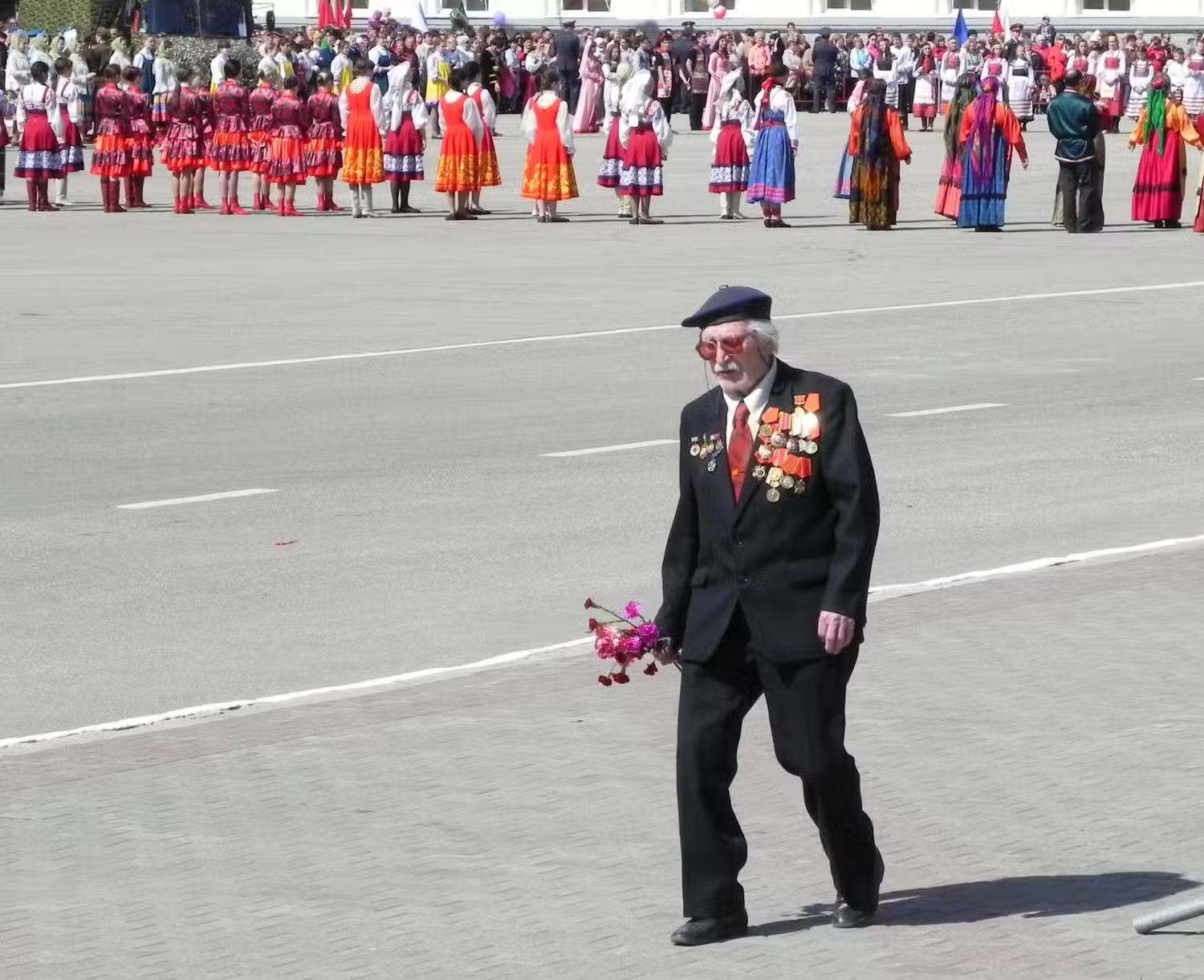
Victory Day in Russia and Other Countries: Vocabulary and History
Victory Day is a holiday of significance in many Eurasian cultures, but particularly stands out in Russia. People pay homage to veterans and remember the sacrifices that were made for the sake of victory in WWII. While Victory Day is deeply ingrained in Russia’s national identity, its observance across Eurasia reveals nuanced changes or adaptations […]
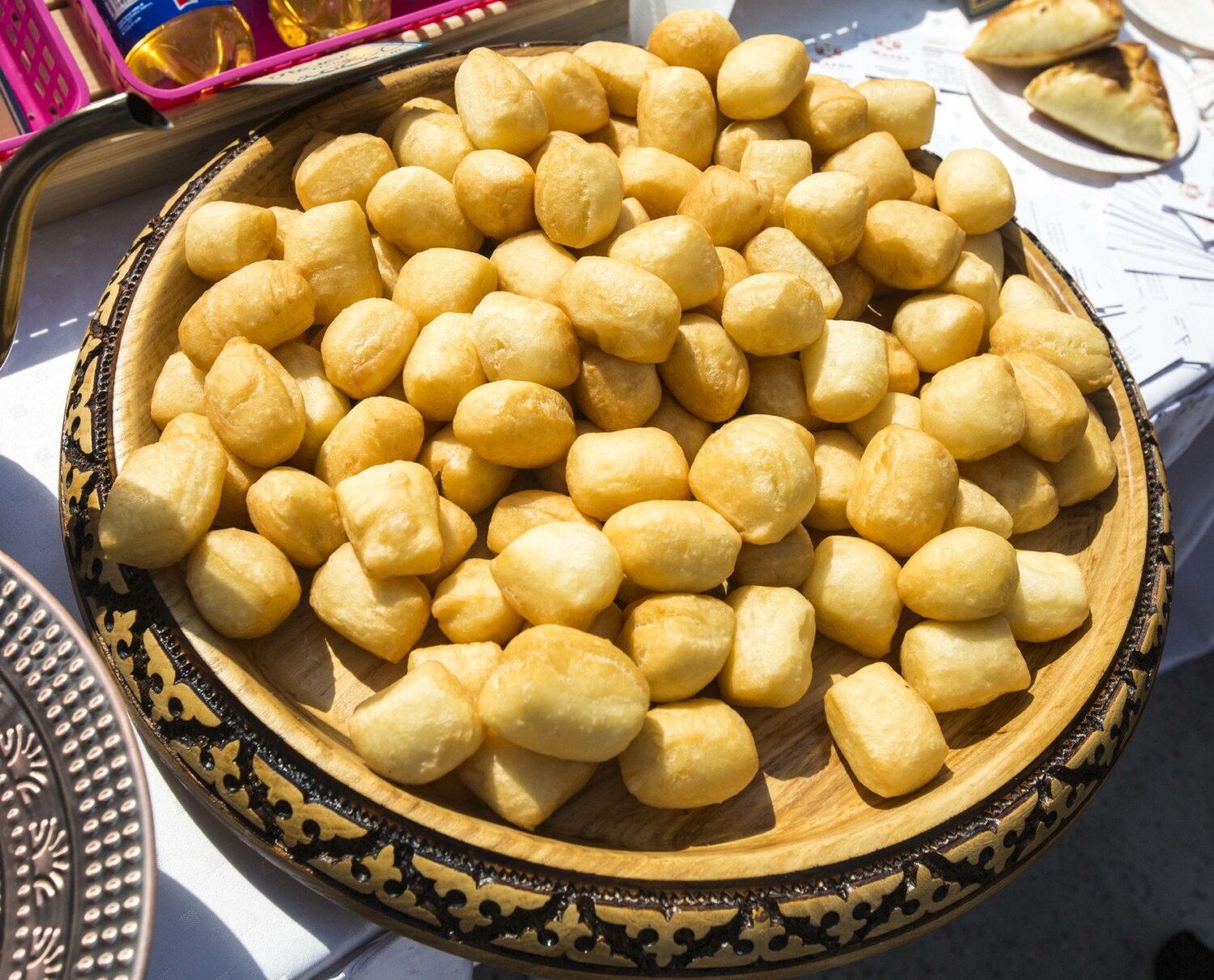
Baursak: The Donut of Hospitality
Throughout much of Central Asia, one type of bread stands out from all the rest – baursak (баурсак). These small pieces of fried dough are known throughout Central Asia among many of the Turkic and Mongolian-speaking peoples there. In Kazakhstan and Kyrgyzstan especially, they are served as everyday fare accompanied by tea and are staple […]

Chuchvara, Chuchpara, Tushpara: The Daintier Dumping of Central Asia
Chuchvara is a dumping staple dish in Central Asia, the South Caucasus, and the Middle East. Originally introduced there under the Persian Empire, they are today most associated in Central Asia with Uzbek tradition. However, they are also considered a local national dish throughout the countries of the region. Chuchvara contrast with manti, the other […]





